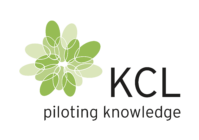Introduction to Advanced Materials for Paper Strengthening
In the ever-evolving world of materials science, the quest to make paper stronger has led to the development of advanced materials. These innovations are not only enhancing the durability of paper but also opening up new possibilities for its applications. At KCL, we are at the forefront of this revolution, leveraging our expertise in nanocellulose to create stronger, more resilient paper products.
Advanced materials such as microfibrillated cellulose (MFC) are transforming the paper industry. MFC, derived from industrial agro sidestreams like sugar beet pulp, offers a sustainable and efficient way to enhance paper strength. By incorporating these materials, we can significantly improve the performance and longevity of paper products.
In this blog post, we will delve into the science behind making paper stronger, the benefits of using advanced materials, and provide a step-by-step guide to enhancing paper strength. We will also explore real-world applications and future trends in paper strengthening technologies.
The Science Behind Making Paper Stronger
Understanding how to make paper stronger begins with a grasp of its fundamental structure. Paper is composed of cellulose fibres, which are naturally strong but can be further reinforced through the addition of advanced materials. One such material is microfibrillated cellulose (MFC), which is produced by mechanically fibrillating cellulose fibres to create a network of fine fibrils.
At KCL, our MFC is derived from sugar beet pulp, a by-product of the sugar industry. This process involves removing lignin and hemicellulose, leaving behind pure cellulose that is then mechanically processed to produce MFC. The resulting material has a high surface area and excellent bonding properties, making it ideal for enhancing paper strength.
When MFC is added to paper, it forms a dense network of fibrils that interlock with the cellulose fibres, significantly increasing the paper’s tensile strength and stiffness. This not only improves the durability of the paper but also reduces the amount of raw material needed, leading to substantial cost savings.
Benefits of Using Advanced Materials in Paper
Incorporating advanced materials like MFC into paper products offers numerous benefits. Firstly, it enhances the mechanical properties of the paper, making it stronger and more resistant to tearing and deformation. This is particularly important for applications where durability is critical, such as packaging and industrial uses.
Secondly, using MFC can lead to significant material savings. By increasing the strength and stiffness of the paper, manufacturers can use less raw material to achieve the same performance, reducing costs and environmental impact. This aligns with the growing demand for sustainable and eco-friendly products.
Additionally, MFC can serve as a natural binder in coating formulations, replacing synthetic latexes and other barrier materials. This not only improves the environmental profile of the paper but also enhances its functional properties, such as water resistance and printability.
Step-by-Step Guide to Enhancing Paper Strength
Enhancing paper strength with advanced materials involves several key steps. Here is a step-by-step guide to help you understand the process:
Step 1: Selection of Raw MaterialsProcess the cellulose fibres mechanically to create microfibrillated cellulose. This involves breaking down the fibres into fine fibrils, which increases their surface area and bonding potential.
Step 3: Incorporation into Paper PulpForm the paper using traditional papermaking techniques. The presence of MFC will improve the paper’s mechanical properties, making it more durable and resistant to damage.
Step 5: Testing and Quality ControlConduct rigorous testing to ensure the enhanced paper meets the desired strength and performance criteria. This includes measuring tensile strength, tear resistance, and other relevant properties.
Case Studies: Real-World Applications of Stronger Paper
Several industries have already begun to reap the benefits of stronger paper made with advanced materials. For instance, the packaging industry has seen significant improvements in the durability and performance of corrugated boxes and other packaging materials. By incorporating MFC, manufacturers can produce lighter, stronger packaging that reduces shipping costs and environmental impact.
In the printing industry, enhanced paper materials have led to better print quality and increased resistance to wear and tear. This is particularly important for high-end printing applications, where the quality and longevity of the printed material are paramount.
Another notable application is in the production of specialty papers, such as those used in currency and security documents. The increased strength and durability provided by MFC make these papers more resistant to counterfeiting and damage, ensuring their integrity and longevity.
Future Trends in Paper Strengthening Technologies
The future of paper strengthening technologies looks promising, with ongoing research and development focused on further enhancing the properties of paper. One emerging trend is the use of nanocellulose, which offers even greater potential for improving paper strength and functionality.
At KCL, we are continuously exploring new ways to leverage our expertise in nanocellulose to develop innovative paper products. This includes investigating the use of other sustainable raw materials and refining our production processes to achieve even better performance and efficiency.
As the demand for sustainable and high-performance paper products continues to grow, we are committed to staying at the forefront of this exciting field. By harnessing the power of advanced materials, we can create stronger, more durable paper that meets the needs of a wide range of industries and applications.
